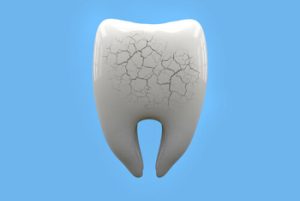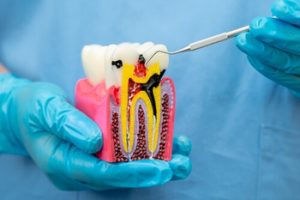Tooth decay often begins unnoticed, progressing quietly beneath the surface. By the time discomfort sets in, many people search for solutions they can try on their own. While early action can support your dental health, it’s vital to understand the limits of at-home strategies. Certain remedies may help slow down early-stage damage, but some practices can do more harm than good. If you’re wondering how to remove tooth decay yourself, keep reading to explore realistic options and what signs mean it’s time to see a dentist.
Know the Limits of Home Care Before You Begin
Before trying home remedies, it’s essential to understand how decay starts and what can and cannot be reversed outside a clinic.
Understanding the Early Stage of Tooth Decay

Why You Can’t Always Rely on Natural Home Remedies
Although ingredients like coconut oil or oil pulling are popular online, their benefits are limited. They may reduce surface bacteria temporarily, but they cannot repair damaged tooth enamel or reach inside a cavity. Applying homemade mixtures may even irritate gums or mask symptoms until decay worsens. At-home efforts must be paired with regular dental checkups to ensure problems are properly managed. Knowing when to act for yourself and when to involve a dental professional helps protect your permanent teeth long-term. Never assume a lack of pain means the issue is resolved.
What You Can Do at Home During the Early Stage
If decay is in its earliest phase, a few simple habits can support recovery and slow progression.
Strengthen Enamel With the Right Products
Using fluoride toothpaste is one of the most effective ways to support remineralisation. It helps harden weakened spots and slows the tooth decay process. For targeted care, a high-fluoride toothpaste may be recommended by your provider. This is especially useful for school-age children and adults at higher risk of decay. Products should be used consistently, twice daily, and brushing should last at least two minutes. Avoid rinsing with water immediately after brushing so fluoride can stay on the surface longer.
Rinse Smartly for Daily Support
A fluoride mouth rinse or other approved mouth rinses can complement brushing. These liquids reach areas between teeth and reduce bacteria levels, where decay often begins. Select products that are alcohol-free and made to prevent tooth decay. Rinses can also help if you’re prone to dry mouth, which increases cavity risk. If you’re unsure what to choose, your dentist can suggest a rinse with the right fluoride level for your needs. Used daily, this small habit can make a big impact.
Tweak Daily Habits to Slow the Spread
Everyday choices around diet and hygiene play a major role in preventing worsening decay.
Cut Back on Sugary Foods and Drinks
Frequent exposure to sugary drinks and sugary foods feeds the bacteria responsible for enamel erosion. These sugars combine with dental plaque to produce acids that linger on tooth surfaces. Reducing sugar intake and learning to avoid sugary foods between meals can halt this cycle. Swap high-sugar snacks for options like cheese, nuts, or crunchy vegetables. Avoid sipping sweet drinks slowly throughout the day, as this extends acid exposure. Water, ideally with enough fluoride, is the safest option.
Stimulate Saliva and Limit Acid Buildup
Chewing sugar-free gum after meals can help boost saliva flow. Saliva naturally cleans the mouth and neutralises acids, acting as a first line of defence. Look for gum containing xylitol, a compound known to fight bacteria. Saliva also carries minerals needed to repair early damage, especially in areas vulnerable to wear. If you typically drink only bottled water, be aware that it may lack fluoride unless labelled. Natural defence systems are most effective when supported by proper oral hygiene.
Know When Prevention Becomes a Necessity
If you’re trying to stop decay at home, your focus should also be on preventive measures that stop future issues before they begin.
Don’t Skip Regular Brushing and Flossing
No remedy can replace regular brushing and flossing for effective cavity prevention. You must brush your teeth at least twice a day and clean between them with floss or interdental brushes. Practising good oral hygiene daily helps lower your risk of developing decay. Pay attention to your gumline, where dental plaque often accumulates. If your brushing habits are rushed or inconsistent, decay can form even under a healthy diet. Aim to build a routine that protects your healthy teeth daily.
 Choose Products That Prevent Decay, Not Just Mask It
Choose Products That Prevent Decay, Not Just Mask It
There’s no shortage of home care products that claim to reverse cavities, but few have any effect beyond cleaning. Focus instead on evidence-backed items like mouth rinse with fluoride or sugar-free toothpaste. Consider your specific risk level: those with a family history of dental caries or high-risk factors (like dry mouth or enamel defects) may need targeted support. Your dentist might also suggest fluoride treatments or sealants if you’re prone to decay. To prevent cavities, rely on consistent habits and reliable products, not temporary fixes.
Professional Support Can’t Be Replaced
Even if you follow ideal at-home care, regular visits to a clinic remain essential for lasting results.
Early Diagnosis Can Save Your Teeth
Seeing a dental professional regularly is the only way to detect decay that home methods miss. Early-stage problems often have no visible signs or discomfort until they worsen. Dentists can identify weakened spots before they turn into full dental cavities, giving you more treatment options. They may also use imaging to spot trouble areas between teeth or beneath the surface. Visiting your dentist regularly ensures problems are caught before they progress. Waiting too long may lead to avoidable tooth loss.
In-Clinic Treatments for Safe Decay Removal
Once decay progresses beyond enamel, you cannot manage it yourself. Professional cleaning, fillings, or even crowns may be required, depending on the extent. Attempting to self-treat with DIY scraping or acidic solutions risks permanent damage. Maintaining dental hygiene between visits is important, but not enough on its own. In some cases, only a dental clinic can halt the spread and restore structure. Always pair your home care with regular dental checkups to keep decay from advancing.
Know What You Can and Can’t Do at Home

Ignoring persistent symptoms can lead to more complex treatments that could have been avoided with timely care. Visiting early also allows us to monitor risk factors you might not recognise on your own. Our clinic is here to guide you safely through the right treatments and preventive care. Call us today to book your consultation and protect your smile for good.
Illawong: (02) 9158 6756
Sylvania Waters: (02) 9159 6083
Pyrmont: (02) 9158 6213
References
https://www.nidcr.nih.gov/health-info/tooth-decay
https://www.mayoclinic.org/diseases-conditions/cavities/symptoms-causes/syc-20352892


 Choose Products That Prevent Decay, Not Just Mask It
Choose Products That Prevent Decay, Not Just Mask It


